In 1839, the Warren County village known as Gravel Hill renamed itself in honor of its most celebrated citizen, 37-year-old John Insley Blair. In 2014, Blairstown's 175th anniversary celebration of that event brought to mind not only the man's profound influence on the development of transportation and industry in America, but also suggests a virtual trail of his life through the places where he learned to make his way. Blair's life, which spanned the entire nineteenth century—more than 40% of America's history—reflects the country's development over those hundred years from a segmented rural society, to a cohesive industrial nation designed in no small part by the railroad and financial networks that he facilitated. Despite his accomplishment as one of the world's wealthiest men, Blair, known to townsfolk as "plain John I.", sustained a simple, unembellished lifestyle in his beloved village. The area's extraordinary heritage is in large part due to the fact that his ambition, and his ideas that flourished throughout America originated here in the New Jersey frontier.
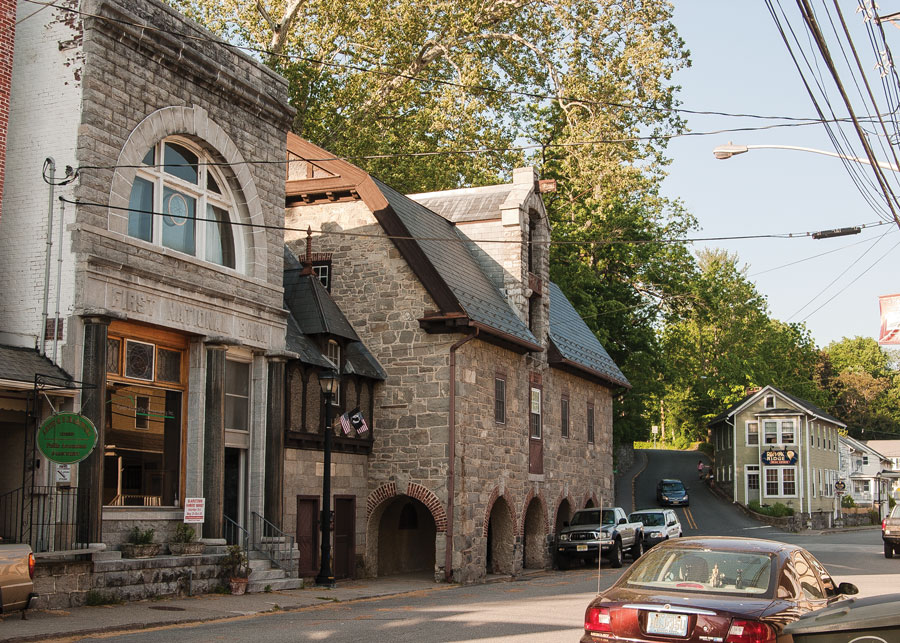

Perhaps someday John I. Blair's birthplace will be marked for all to see, but for now its exact location is uncertain. In 1802, he was born in a log cabin near "the big spring", Shippen's spring, located on Foul Rift Road near the railroad culvert two miles south of Belvidere. It was here that his father oversaw shipping of iron products downriver from the Oxford Furnace's company wharf.
When John was two, the Blairs moved to a farm near Hope. Along the way, much of their route probably followed that of today's County Route 519. They may have passed by a tiny house, now the White Township Historical Museum at Bridgeville, that two centuries later would hold memorabilia relating to their son's accomplishments. And continuing in their wagon a short distance farther, how awed his parents would have been to imagine that half a century later a huge steam-powered Warren Railroad "iron horse" would cross this road, due mainly to the entrepreneurial genius of their son.
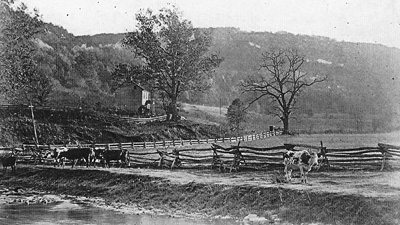
Young Blair spent his boyhood on the Beaver Brook farm along present day CR-519, two miles south of the village of Hope, near Swayze's Mill Road. Although he received only a rudimentary education, attending classes in Hope when farm demands allowed, the boy trapped muskrats and rabbits that he sold on the family's supply trips to Easton. Many years later he shared in a rare interview that never in his life did he ever feel so wealthy as he did when he made his first money selling sixteen pelts for a dollar.
About 1813, at the age of eleven, young Blair declared his education complete as he began his first career in the mercantile business, working as a clerk in the store of his cousin, Judge Blair, in Hope. The stone building, still in use today, stands at the northwest corner of High and Walnut Streets. He worked there for about seven years, except for a short time when he went back to the farm to help out upon the death of his father. The building in which he probably attended school remains on the east side of CR 519, south of the blinking light.
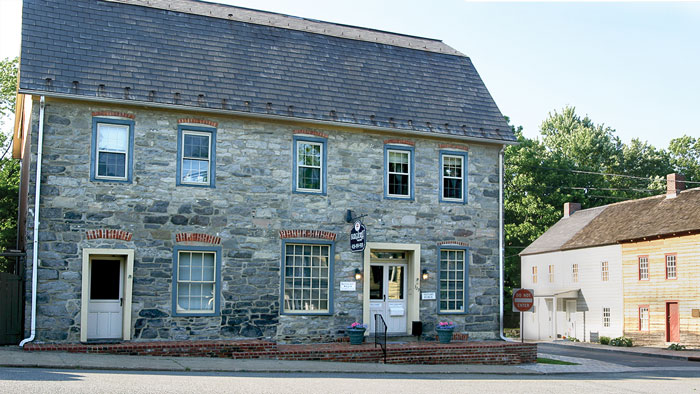
Late in his teens, about 1820, John I. Blair moved to the small hamlet of Butts' Bridge, soon to be called Gravel Hill, which at the time contained only four houses and a mill. There he went into partnership as a storekeeper, two years later owning the store outright, a business he would foster for forty years. At age 23, Blair became the postmaster of the local office and, at age 26, he married Anne Locke with whom he established a homestead at Gravel Hill. As his mercantile business grew, Blair set up family members in other stores in Paulina, Marksboro, Huntsville, and Johnsonburg, thereby creating a chain of Blair-operated establishments. He became a wholesale distributor, purchasing local farm produce and carting it by several horse-and-wagon teams to eastern New Jersey and New York. The return trips brought back fresh goods to be sold to other local merchants, as well as for his own stores.
In 1830, at 28 years of age, Blair and brother James had accumulated enough capital to open a National Bank in Belvidere, which handled many of the Blair family's transactions in land companies, mining interests, and railroad construction. John I. retained leadership of the bank, noted for its stability and solidity, until the end of his life. Although the building is now gone, its site is covered, ironically, by the drive-through lanes for the PNC bank on Mansfield and Front Streets. And a block away on Hardwick Street is another reminder of John I.'s family wealth, the mansion of his son, DeWitt Clinton Blair, which later housed for many years the Warren County Library.
Later, John I. became interested in flour and cotton production, eventually operating four flouring mills at one time. One cotton mill was located along the Paulins Kill downstream from Marksboro. His business acumen unmatched, Blair once purchased, at a greatly reduced price, a large batch of cotton that had seemingly spoiled. After culling out the small amount that was ruined, he processed the rest, turning a profit of $15,000, a bonanza in his day. Other transactions brought various amounts of real estate into his hands, and his cumulative local landholdings became substantial. Mr. Blair began to follow other entrepreneurial pursuits that would ensure him a fabled legacy as railroad mogul and land developer.
During the 1840s and 50s, Blair joined the Scranton brothers at Slocum Hollow, PA, (the future site of Scranton) in the Lackawanna Coal & Iron Company, one of the earliest suppliers of steel rails to railroad companies. To reach the lucrative eastern markets for their coal and iron products, by the early 1850s the new company had built a rail line of its own— the Delaware, Lackawanna, & Western— as far south as the Delaware Water Gap, but still needed to connect to one of the existing New Jersey railroads in order to reach their intended markets. Blair moved quickly, forming the Warren Railroad Company, of which he was the major stockholder and president, then taking charge to establish its financing, right-of-ways, and construction. By 1857, the Warren Railroad had been completed and leased to the DL&W, linking it with the Jersey Central at Hampton.
As the railway came north through Washington and Oxford, then turned west along its final stretch, the tracks found their way roughly parallel and north of what is now State Route 46, across the Beaver Brook, then through the 900 foot-long Manunka Chunk Tunnels. A junction and station were erected at the tunnel's exit, and the WRR continued along the ridge (above the current highway) towards its junction with the DL&W.
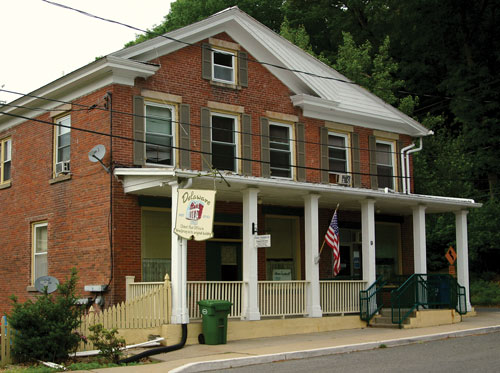
Just before the Warren Railroad made its Delaware River crossing into Pennsylvania, Blair built one more station, this time conceiving an entire town that would originate and mature in tandem with the commerce his railroad would bring. In anticipation, he purchased tracts of farmland that he would subdivide and resell as lots arranged between the hillside and the river. The site sprouted quickly into the village of Delaware Station, (later Delaware) with a hotel and general store, creamery, wood-working factories and a wagon manufacturer. Scant evidence of the village's railroad years remains in the sunken pit of a turntable, an occasional visible bit of railroad tie, well-worn bridge abutments, and the intermittently discernible rail bed through the village, following a bit of road out of town known as Old Route 46. But, although the station and hotel are gone, today's Delaware Historic District, listed on the National Register of Historic Places in 2003, consists largely of buildings erected in that era, mostly unaltered and retaining the flavor of that time.
In 1859, at age 57, when most men of his day had reached the end of their productive lives, Blair retired from his mercantile business of forty years to focus on building railroads and developing towns along their routes, applying his New Jersey prototype to America's Midwest. With no interest in operating completed railroads, he constructed rail lines that were then leased or sold to other companies. Blair became the major shareholder in more than a dozen railroad companies, and ultimately acquired nearly two million acres from the government for railroad and land development. Under his directorship in six different land companies, over eighty towns were laid out, many named after family and associates, as he often assisted newly organized church congregations within those towns with donations of land and finances. In one interview he proudly proclaimed that he built every railroad for cash, never entered into railroad schemes on mere speculation, and never had to sell stock to finance his projects.
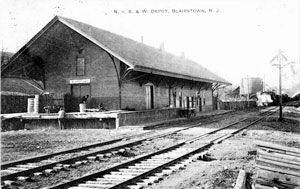
Even at age 75, Blair continued to involve himself in railroad development when he constructed the Blairstown Railway in his own backyard. By 1877 the railway began moving freight and passengers from its Blairstown station past a stop at Kalarama, the depots at Vail and Hainesburg—site of the Lackawanna Railroad's massive poured concrete viaduct—past the former hamlet of Warrington and Columbia Junction to its terminus at Delaware Station. There, freight and riders could transfer to DL&W trains heading eastward into New York or to destinations westward. Perhaps to facilitate his personal or family's trips to the outside world, the project was more likely another speculative venture. Sure enough, in the early 1880s, the Blairstown Railway was sold to the New York, Susquehanna & Western Railroad, becoming part of that company's main line as it extended westerly to the Pennsylvania coal fields and eastward toward Newton and beyond.
The name most commonly associated with the Blairstown Railway is "the Dinkey", the line's short train usually made up of a small steam locomotive pulling one or two cars. After serving for nearly half a century, the train was replaced in 1924 with a single motor car powered by a gasoline engine which served until 1928, when service was discontinued. Today, the rails are gone and most of the old right-of-way has become the Paulinskill Valley Trail along which the railway's bucolic views may still be enjoyed as well as the awesome Hainesburg, or Paulinskill, viaduct. Access to the rail trail is provided at Footbridge Park in Blairstown and at various road crossings from Blairstown to near Columbia. From there to Delaware village, the old Dinkey tracks are covered by Route 46.
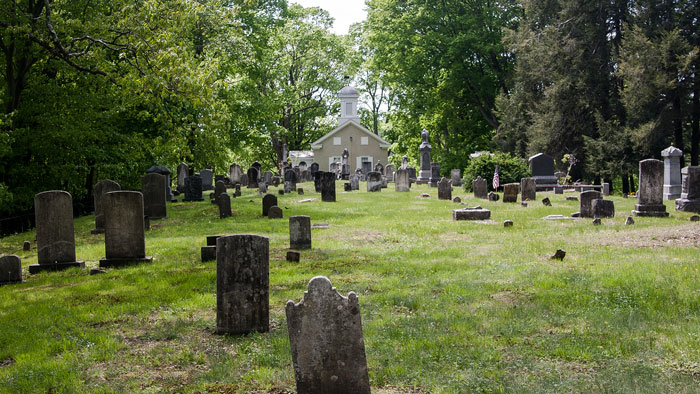
In 1887, at the age of 85, disenchanted with the construction scheme of the Northwestern Railroad, John Blair cashed in his stock for $2,000,000. To save the exchange rate between Chicago and New York, he carried the cash in two satchels to New York where he personally deposited the money. Yet the great entrepreneur's frugality was matched by his public benevolence. Perhaps spurred by a desire to afford others more than his own meager education as a youth, Blair, at age 46, with other town leaders, fostered the formation of a private school, the Blair Presbyterial Academy in 1848. A sturdy stone schoolhouse was constructed on a knoll at the western edge of the hamlet where classes met until about 1854 and in later years was used as the Music Hall. Often referred to as "the Old Academy", the rugged structure still stands adjacent to the cemetery, which holds the grave of the Academy's greatest benefactor, John I. Blair, as marked by a tall monument.
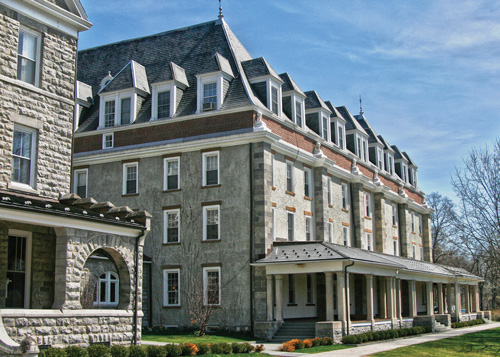
In 1851, Blair donated funds for the construction of a dormitory dubbed "Blair Hall", for which the entire campus was ultimately named. When this building burned down in 1867, Blair proposed to the resident farmers that he would foot the bill for construction of a new building if they would assist in transporting local stone for the structure. As construction began they were surprised at the scope and size of the new "Insley Hall", named in honor of Blair's wife's family. Three stories tall, plus attic and basement, it set the pattern for the Academy's magnificent architecture, as it expanded through modern times, supported largely by Blair and his family. Over the years, Blair also provided financial support for Princeton University and Lafayette College.
In 1896, Blair presented a new electric plant to the Academy and also provided sixty-seven incandescent lamps "to light the town". His water works, built first to provide his home with water, were extended next to the Academy and finally to portions of Blairstown.
Very late in his life, at the age of 88, John I., son, DeWitt Clinton, and grandson, C. Ledyard, extended the family's financial houses by founding the prestigious New York City banking firm of Blair & Company primarily to manage the Gould family's railroad interests. John I. also held mortgage bonds of dozens of companies and the controlling ownership of various large corporations.
Near the end of his life, when asked why he did not live the same splendidly luxurious life as his son did, he replied in humor, "Well, I'll tell you. I haven't got a rich father as he does." And upon John I.'s death, one newspaper stated that he had died because "he was simply worn out".
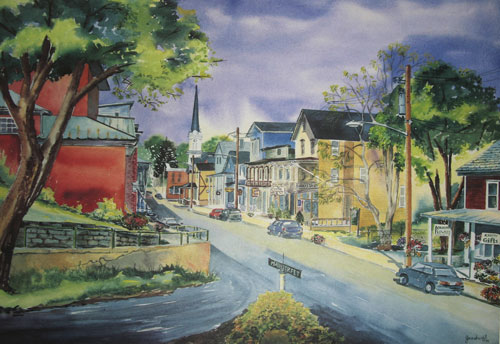

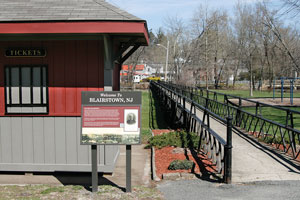
The Blairstown Historic District was listed on the National Register of Historic Places in 2007. Almost half of the primary buildings within the District were built during John Blair's lifetime, the boom period following the construction of the Blairstown Railroad. The distinctive historical character of the village results from the survival of these buildings, largely because the railroad was the last major transportation improvement that the town has seen. State Route 94 has since bypassed Main Street as the main thoroughfare for travellers, and buildings "in town" have suffered few contemporary updates. The two-story porches that remain on many of the storefronts are particularly reminiscent of late 19th and early 20th century main streets.
Blair Academy, currently considered one of the most prestigious private high schools in the country, is also home to numerous historic and architecturally important structures. The cemetery opposite the Old Academy building contains the gravesites of John Insley Blair, his family, and many of his illustrious nineteenth-century contemporaries.
Signs have recently been erected around and along Main Street that explain, with text and historical photos, the significance of various buildings and, in many cases, their direct connection with John Insley Blair. A walking tour of the village is one well worth taking!
Download and use this little map as a Quick Guide!
The Blairstown Historic Preservation Committee provides self-guided maps of the historic district as well as rotating visual displays and historic archives featuring Blairstown's namesake John I. Blair, prominent families and local landmarks. BHPC was established in 2001 by Blairstown Township. Blairstown Township Municipal Building, 106 Route 94, open 8-4 weekdays and by weekend appointment. 908/362 -6663.
Millbrook Village, part of the Delaware Water Gap National Recreation Area, is a re-created community of the 1800s where aspects of pioneer life are exhibited and occasionally demonstrated by skilled and dedicated docents throughout the village
The Centenary Stage Company produces professional equity theatre and also a wide variety of top-flight musical and dance events throughout the year.
Choose and Cut from 10,000 trees! Blue Spruce, Norway Spruce, White Pine, Scotch Pine Fraser Fir, Canaan fir, Douglas Fir. Family run on preserved farmland. Open Nov 29 - Dec 23, Tues-Sunday, 9-4. Easy Access from Routes 78 or 80.
Local roots!
Consider Rutherfurd Hall as refuge and sanctuary in similar ways now, as it served a distinguished family a hundred years ago.